These investigations are virtual adaptations of the FoodPrints Curriculum
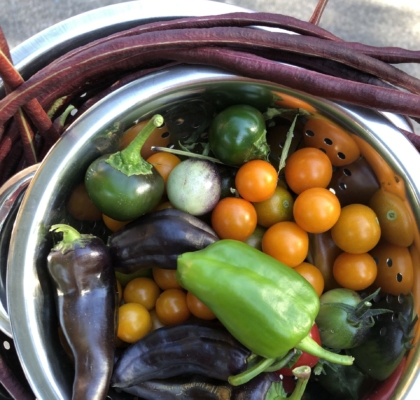
Sorting Game: Edible Plant Parts
Investigation Description:
In this investigation, students will sort plants by the part of the plant that we eat. You will need a collection of fruits, vegetables, grains, and dry beans to hold up for students to see the different plant parts: roots, stems, leaves, flowers, fruits, and seeds.
Students can take turns naming the piece of produce that you hold up and suggesting which edible plant part category it goes into. For example, you may hold up a carrot, and then you would talk through your thinking process — “Well, I know the part of this vegetable that we eat grows underground, so I think it would be in the “roots” category.”
Ask students to identify the edible part of each plant you show them. Engage students in a discussion about the produce in each plant part category and point out the differences in structure that different fruits and vegetables may have although they serve the same function, or job, in the plant.
Time: 15-30 minutes
Teacher Materials: Examples of fruits, vegetables, grains, legumes that fit into the different plant part categories
Student Materials: None
This virtual investigation is adapted from: 1st Grade – Edible Plant Parts
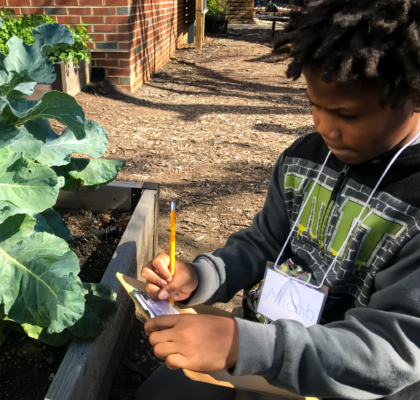
Observational Drawings of Edible Plant Parts
Investigation Description:
For your students, demonstrate how to closely observe a sample fruit or vegetable, and then show them how to sketch an observational drawing of that fruit or vegetable. Students will then choose from available examples (at their home or one the teacher holds up to the screen) a fruit or vegetable to use for their own detailed observational drawing.
Students quietly concentrate and draw, and then they are invited to shared their observational drawings with the group. They are encouraged to label what edible plant part category their chosen subject belongs to (root, fruit, stem, leaf, flower, seed).
Time: 15-30 minutes
Teacher Materials: Examples of fresh fruits/veggies + materials to demonstrate observational drawing (paper or journal + pencil + colored pencils/crayons/markers)
Student Materials: Paper, writing or drawing utensils, and a fruit or vegetable (optional)
This virtual investigation is adapted from: 1st Grade – Edible Plant Parts
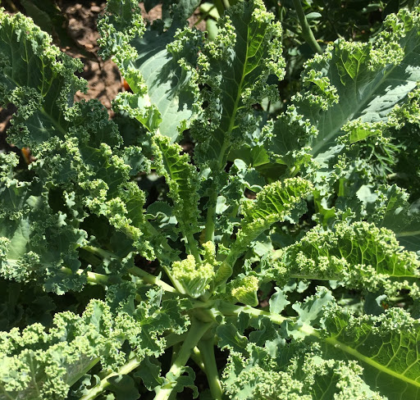
Act It Out: Brassicas from Seed to Plant
Investigation Description:
Act out the life cycle of a plant with your students, focusing on one type of brassica, using the narration below. Before beginning, review types of brassicas (kale, radishes, cabbage are a few examples), and then ask students to choose the type of brassica they would like to act out.
Narration: You are a tiny brassica seed in dark, soft soil. Carefully, fold your body as small as possible, and bury yourself into the soil. Imagine you can feel moisture reaching you through the soil. It is raining! You love when it rains because you can feel that you are starting to grow. Now, make your body a little bigger to show that you are growing. Lift your head up or stretch out your arms. Finally, after days and nights of pushing through the soil, you pop up above the ground. You are still a small plant, so you are not standing yet. Crouching or kneeling, stretch your hands above your head to show the plant is now above ground. Each day, you soak up moisture, rain, and sunlight to help you grow into a big, strong plant. You grow a bit taller each day, reaching your arms up and stretching your legs until you are standing nice and tall. As you stand up, make the shape of the brassica plant you have become.
Time: 10 minutes
Teacher Materials: Optional: Real examples of brassicas to show students
Student Materials: None
This virtual investigation is adapted from: 2nd Grade – Plants and Their Families
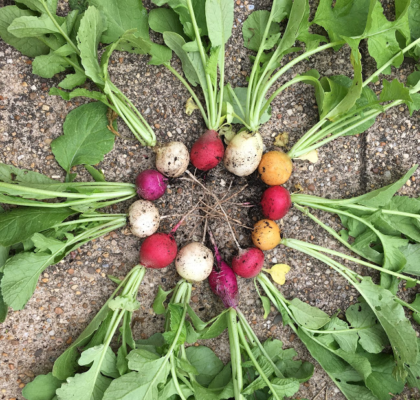
Compare and Contrast: Leaf Families
Investigation Description:
Show students examples of leaves and edible parts of some different plant families — brassicas, nightshades, legumes and cucurbits. Explain that they are going to draw leaves from two plants from different families so that they can see the similarities and differences between them. You should choose two leaves to hold up so students can see them clearly through the screen. Encourage students to look closely at the leaves they are drawing and notice shapes of the leaves and other details. After students are done drawing, engage students in a discussion about the similarities and differences that they noticed of the leaves from the plant families you chose to show them and that they drew.
Time: 15-20 minutes
Teacher Materials: Examples of leaves from different plant families
Student Materials: Paper and writing or drawing utensils
This virtual investigation is adapted from: 2nd Grade – Plants and Their Families
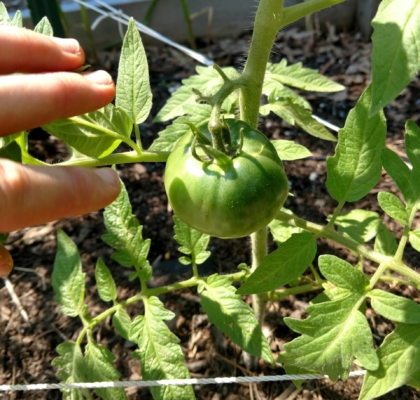
Photosynthesis Movement Activity
Investigation Description:
In this investigation, students will learn more about photosynthesis while creating and performing movements that will correlate with the major components of the photosynthesis process: a plant, the sun, carbon dioxide, water and nutrients.
Begin by sharing with students the process of photosynthesis. Explain to students that they will be reenacting the process of photosynthesis at home, using movements that they create. Share with students that they will need to come up with a specific movement for 5 components of photosynthesis ( a plant, the sun, carbon dioxide, water and nutrients)–giving students time to create a corresponding movement for each.
Next, explain to students that you will narrate the process of photosynthesis. Share that when a specific component is mentioned in the process of photosynthesis students need to perform the movement that they chose to represent that component. For example, if the student says, “The leaves of the plant turned slowly towards the sun.” Students would respond by enacting their plant movement. Make sure to narrate slowly so that students are able to listen carefully and perform their movement.
Time: 10-20 minutes
Teacher Materials: None
Student Materials: None
This virtual investigation is adapted from: 3rd Grade – Importance of Photosynthesis
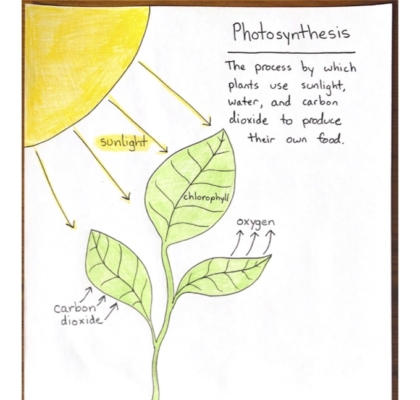
Photosynthesis Diagrams
Investigation Description:
Review the vocabulary that is key to understanding photosynthesis: chlorophyll, sun, leaf, nutrients, water, carbon dioxide, and oxygen.
Explain to students that they will be creating a diagram to represent the process of photosynthesis making sure to incorporate chlorophyll, sun, leaf, nutrients, water, carbon dioxide and oxygen into their diagram. Students may use a wide assortment of materials to complete their diagram. These diagrams can be as artistic and interpretive as the student wishes as long as all discussed components of photosynthesis are present. Students may use a pencil, paper, crayons, markers, household items such as cotton balls (for carbon dioxide), pasta (for sun rays) or even using leaf rubbings to color in the art. Creativity is encouraged.
At the bottom of the page, ask students to explain their diagram using the sentence starter: “Photosynthesis is…” For example: “Photosynthesis is the process that plants use to make food from water, sunlight, and carbon dioxide. Oxygen is a by-product of this process.”
Time: 20-25 minutes
Teacher Materials: Photosynthesis Diagram Example
Student Materials: Paper, writing utensil, and drawing utensils. Optional: Household items such as cotton balls (for carbon dioxide), pasta (for sun rays), and/or leaves for leaf rubbings.
This virtual investigation is adapted from: 3rd Grade – Importance of Photosynthesis
